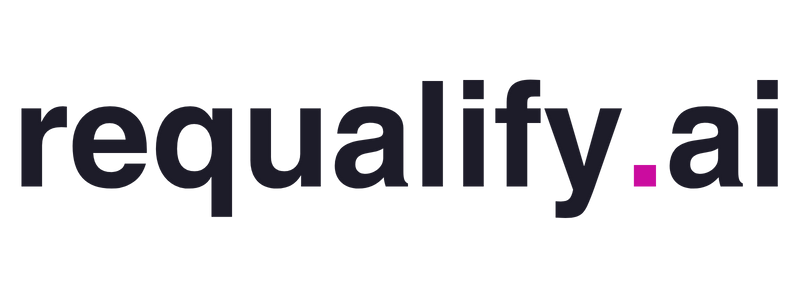
Summary: Document analysis is one of the most versatile and comprehensive methods in qualitative research. Unlike approaches that rely solely on direct observations or interviews, documentary analysis allows the study of materials such as texts, images, videos, and other records. Its focus goes beyond the manifest content, also seeking to interpret latent and symbolic meanings, making it essential to understand the historical, cultural, and social dynamics underlying each document (Farquhar et al., 2020). By reconciling critical and systematic readings, it is possible to achieve a deeper understanding of the phenomena investigated.
In the current scenario of expansion of Qualitative Research with AI, there are even more opportunities to enhance document analysis. Software such as requalify.ai, Nvivo, Atlas.ti, MaxQDA and Iramuteq have been used not only in the development phase codification and categorization, but also for extracting themes and patterns with increasing accuracy. In this article, we address key concepts, common errors, and applications of document analysis, offering practical suggestions to strengthen the validity and reliability of the results. For those who wonder “How to do qualitative data analysis?” or want a Software for qualitative data analysis that speeds up tasks Content Analysis, the text also suggests tool integrations focused on data quality and security.
Concepts and Definitions
Document Analysis
THE document analysis consists mainly of a method that involves the identification, selection, evaluation and synthesis of data contained in documents, whether written, visual or audiovisual (Restivo & Apostolidis, 2019). These documents are interpreted critically, considering the social, historical, political and cultural contexts in which they were produced. In practice, analysis protocols similar to those of content analysis or thematic analysis are used, but with special attention to the specificities of the documentary format in question.
Manifest Content vs. Latent Content
Within documentary analysis, the distinction between manifest and latent content is central. Manifest content refers to what is explicitly present: written words, objective images or factual data. Latent content, on the other hand, refers to underlying meanings, implicit messages or intentions of the author that are not fully declared (Decrop, 1999). For example, in a news video, the presenter's body language, choice of background and tone of voice can reveal cultural values or undeclared intentions, requiring careful reading by the researcher (Ahmad, 2014).
Triangulation
THE triangulation is essential in documentary analysis, as it strengthens the reliability and validity of findings. It involves the use of multiple sources, methods, or perspectives to corroborate interpretations (Carter et al., 2014). When a researcher studies historical documents, for example, he or she can combine his or her observations with oral interviews and contemporary newspaper records, avoiding conclusions based on a single type of evidence (Farquhar et al., 2020). Triangulation can also involve different researchers analyzing the same materials to compare interpretations.
Authenticity and Credibility
Evaluating the authenticity and credibility of documents is essential. This includes verifying the provenance of the material, the suitability of the producing source and possible biases (Atoofi, 2015). Not all documents are produced with the same intention or rigor, and ignoring this dimension can lead to erroneous conclusions. For example, when analyzing institutional reports, it is advisable to consider whether there are political or economic interests behind a given discourse.
Cultural Material
Mainly, from the perspective of qualitative data analysis, cultural material includes diverse artifacts—from paintings and sculptures to videos, advertisements, and internet memes—that reflect social and cultural practices (Bularafa & Haruna, 2022). Studying these artifacts makes it possible to understand the worldviews, values, and beliefs of groups and societies at specific times.
Important Questions
How relevant is the historical, social and cultural context in the interpretation of documents?
In general, context acts as a lens that guides the reading of documents. Ignoring historical, social, and cultural influences can result in biased interpretations, since documentary production bears the marks of the time and space in which it was conceived (Restivo & Apostolidis, 2019). When interpreting a political poster from decades past, for example, it is essential to understand the socioeconomic scenario and aspirations of the period so as not to reduce the analysis to an anachronistic reading.
How do the author's intention and the production process influence data analysis?
Undeniably, the author's intention can affect the manifest and latent meaning. A journalistic report may claim impartiality, but still reflect the journalist's personal or institutional views (Carter et al., 2014). Therefore, the author's position, political and cultural motivations, and the way in which the document is published or circulated must be investigated.
How can we differentiate what is communicated explicitly from what is implied or implicit in documentary production?
The main strategy is a critical and systematic reading of the material. Coding and categorization tools, such as Nvivo, Atlas.ti, MaxQDA or even requalify.ai, can help in separating objective data from interpretative elements (Atoofi, 2015). While the first level of analysis focuses on direct information, the second questions subtleties, metaphors, tones and silences.
What are the methods to ensure validity and reliability in the interpretation of documents?
In addition to the triangulation, there are techniques such as peer review and reflexivity of the researcher (Carter et al., 2014). Detailed documentation of the analytical steps is equally valuable, as it facilitates the traceability of the interpretative processes and the replicability of the research.
How can triangulation with other data sources enrich documentary analysis?
Combining methods—such as interviews, observations, and focus groups—with documentary analysis creates a more panoramic view (Ahmad, 2014). Thus, divergent information can be analyzed together, revealing contradictions and pluralities that would otherwise go unnoticed.
Frequently Asked Questions and Errors
Ignoring or underestimating the context in which documents were produced
First, a recurring mistake is to treat documents as faithful portraits of reality without placing them in their context. Failure to consider the historical and social background can lead to simplistic readings (Restivo & Apostolidis, 2019).
Confusing content analysis with a mere process of counting frequencies
Secondly, the content analysis is not limited to quantification. Although it often involves counting, especially when using support tools, the true value of analysis lies in understanding the qualitative meanings that emerge (Carter et al., 2014).
Assuming that documents are completely objective
All records are constructed within a social and cultural context. Therefore, reflecting on the subjectivity embedded in each document is essential for an in-depth analysis (Bularafa & Haruna, 2022).
Not performing data triangulation
In turn, the absence of multiple sources and confirmation methods can weaken results (Ahmad, 2014). More experienced researchers often resort to mixed approaches to circumvent biases inherent in just one type of document.
Lack of attention to the authenticity and credibility of documents
Generally, documents whose authorship is unknown or that present inconsistencies can lead to misleading conclusions (Carter et al., 2014). Evaluating the veracity of the source is essential for the integrity of the research.
Key Topics for Development
Systematic processes of collecting, selecting and analyzing documents
The adoption of clear protocols for document collection and selection is crucial. Thus, defining inclusion and exclusion criteria, as well as standardizing procedures for analysis, avoids distortions and promotes consistency (Decrop, 1999).
Coding and categorization methods
Tools like requalify.ai, Nvivo, Atlas.ti, MaxQDA and Iramuteq facilitate content segmentation, code assignment and category creation. This can be applied to both texts and visual and audio media, speeding up pattern identification (Farquhar et al., 2020).
Approaches to differentiating significance levels
Document analysis can use multiple reading strategies: first, the apparent meaning is captured; then, the latent and symbolic elements are delved into (Atoofi, 2015). In this process, internal triangulation (several readings by different researchers) reinforces reliability.
Examples of application in social science and health research
In the field of social sciences, documentary analysis is used to investigate political discourses, cultural identities and historical transformations. In the health area, it can evaluate documents such as medical records, public policies or even awareness campaigns, identifying explicit and implicit messages that affect doctor-patient communication (Bularafa & Haruna, 2022).
Comparison between document analysis and other qualitative techniques
While interviews provide first-person perspectives, documentary analysis allows the researcher to confront official and unofficial versions of the facts (Carter et al., 2014). The complementarity of these techniques increases the depth of the research.
The importance of data triangulation and validation
Combining different methods and sources is a practice that increases the credibility of the research (Carter et al., 2014). Reviewing whether documents, interviews and observations point in the same direction contributes to more robust conclusions.
Considerations on the analysis of multimedia materials
Analyzing videos, images or audio requires adapting protocols. Elements such as lighting, framing, use of colors and editing interfere with the final meaning. In some cases, AI software, such as requalify.ai, can assist in the automatic transcription of audio and the indexing of visual content, facilitating analytical work (Bularafa & Haruna, 2022).
Historical Context and Current Relevance
Origin and Evolution
THE document analysis It has its roots in classical studies of the social sciences, where historians and anthropologists already used written records to understand past civilizations. With the advancement of analysis techniques and the emergence of new media, the methodology has expanded to meet a more complex demand for interpretations (Atoofi, 2015).
Current Relevance
In a hyperconnected world, full of digital information, document analysis becomes even more essential (Farquhar et al., 2020). Researchers are faced with a massive volume of documents — whether social media posts or corporate reports — and the challenge now is how to filter, organize and interpret such data in a rigorous way.
Application in modern contexts
The widespread availability of smartphones and online platforms has also brought new objects of investigation. Digital documents, memes, short videos and podcasts have come to be studied in light of manifest content and of the latent content. This panorama demands innovative methods of collection and categorization, in many cases supported by AI (Bularafa & Haruna, 2022).
Future Implications
Sophisticated techniques for document analysis
The development of algorithms machine learning and natural language processing allows not only the identification of lexical patterns, but also the interpretation of images and videos on a large scale (Atoofi, 2015). In a scenario of Qualitative Research with AI, it is expected that tools will become increasingly accessible, enabling more accurate and faster analyses.
Advances in interdisciplinary research
The future points to greater integration between disciplines, such as sociology, psychology, computer science and semiotics (Farquhar et al., 2020). These joint efforts tend to generate hybrid methodologies, capable of dealing with complex data from different perspectives.
Ethical and methodological challenges
As large-scale collection of digital documents becomes commonplace, debates about privacy and consent arise (Ahmad, 2014). Researchers must reflect on the ethical use of sensitive information and establish transparent standards for data protection.
Continuity in the development of methods
With each new form of recording comes the need to update analysis protocols. The sophistication of tools such as requalify.ai, designed for codification of large volumes of data and semi-automated analysis, will continue to shape the field of document analysis (Restivo & Apostolidis, 2019).
Practical Tips
Always place the document in the context of production
Investigate the historical, social and cultural circumstances that formed the background of the document, be it an academic text, a journalistic report or advertising campaign material (Bularafa & Haruna, 2022).
Combine document analysis with other sources and methods
Triangulation is one of the pillars of solid research (Decrop, 1999). By crossing documents with interviews, observations or Content Analysis on social networks, the understanding of the phenomenon becomes deeper.
Use digital and artificial intelligence tools
Specialized software, such as Atlas.ti, MaxQDA, Nvivo and requalify.ai, help in organizing large amounts of data. In the case of requalify.ai, for example, in addition to automatically transcribing audio or video interviews, it is possible to quickly apply qualitative analysis techniques.
Transparently document methodological processes
Record each step of data collection and analysis, describing inclusion and exclusion criteria, reading protocols, and categories created (Farquhar et al., 2020). This facilitates peer review and replicability.
Review the credibility and authenticity of documents
Check whether the document has an identified author, whether the source is reliable and whether there are no signs of tampering (Atoofi, 2015). This preliminary screening saves time and ensures greater solidity in the results.
Conclusions
Document analysis emerges as a versatile and valuable method for Qualitative Research, as it allows you to explore different media and capture manifest contents and latent contents. Methodological rigor demands special attention to triangulation, the credibility of the sources and the context in which the documents were produced, avoiding superficial or decontextualized readings.
In today's digital age, characterized by an abundance of data, the use of advanced data analysis tools AI, as requalify.ai, tends to optimize the analysis process, allowing the codification and categorization of large volumes of information in less time. However, the effectiveness of these technologies depends on the critical eye of the researcher and well-established methodological protocols.
In short, documentary analysis, supported by systematic and rigorous techniques, opens the way for a deeper understanding of social, historical and cultural processes. Combined with other strategies of Qualitative Data Analysis, constitutes a robust methodological framework to answer complex questions, from “How to do qualitative data analysis?” to interdisciplinary studies involving cultural production in multiple formats.
FAQ (Frequently Asked Questions)
What is document analysis?
It is the method of systematically examining documents (texts, images, videos, etc.), taking into account aspects such as production context, authorship, manifest content and latent interpretations.
How important is context in document analysis?
The historical, cultural and social context shapes the meaning of documents, and is essential to avoid decontextualized or mistaken interpretations.
How does triangulation help in qualitative research?
Triangulation consists of using different sources and methods to compare and validate findings, increasing the reliability and validity of the results.
Are there tools that help with document analysis?
Yes. Software like Nvivo, Atlas.ti, MaxQDA and the requalify.ai help organize, encode, and interpret large amounts of data, including audio and video.
Why should I check the authenticity and credibility of the document?
Documents may be biased, apocryphal or of dubious origin. Assessing credibility prevents hasty or erroneous conclusions from being drawn.
Is it possible to apply document analysis to social networks?
Yes. Posts, comments, memes and short videos can be treated as digital documents, as long as criteria for collection, selection and interpretation are established.
Bibliographic References
- Ahmad, B. (2014). Exploring the Role of Triangulation in the Production of Knowledge for Urban Health Policy: An Empirical Study from Informal Settlements in Aleppo, Syria. Forum for Development Studies, 41(3), 433–454. https://www.tandfonline.com/doi/abs/10.1080/08039410.2014.963143
- Atoofi, S. (2015). Context from a social semiotic perspective: a discourse analytical study of the children TV show, Bubble Guppies. Social Semiotics, 25(5), 558–577. https://www.tandfonline.com/doi/full/10.1080/10350330.2015.1041790
- Bularafa, B.A., & Haruna, M.A. (2022). Multi-methods Approach in Entrepreneurship Research: Triangulation in Action. Journal of Economics, Finance and Management Studies, 5(12), 3649-3655. https://www.ijefm.co.in/v5i12/Doc/23.pdf
- Carter, N., Bryant-Lukosius, D., DiCenso, A., Blythe, J., & Neville, A. J. (2014). The use of triangulation in qualitative research. Oncology nursing forum, 41(5), 545–547. https://pubmed.ncbi.nlm.nih.gov/25158659/
- Decrop, A. (1999). Triangulation in qualitative tourism research. Tourism Management, 20(1), 157-161. https://doi.org/10.1016/S0261-5177(98)00102-2
- Farquhar, J., Michels, N., & Robson, J. (2020). Triangulation in industrial qualitative case study research: Widening the scope. Industrial Marketing Management, 87, 160-170. https://doi.org/10.1016/j.indmarman.2020.02.001
- Restivo, L., & Apostolidis, T. (2019). Triangulating qualitative approaches within mixed methods designs: A theory-driven proposal based on a French research in social health psychology. Qualitative Research in Psychology, 16(3), 392–416. https://www.tandfonline.com/doi/full/10.1080/14780887.2019.1605670


